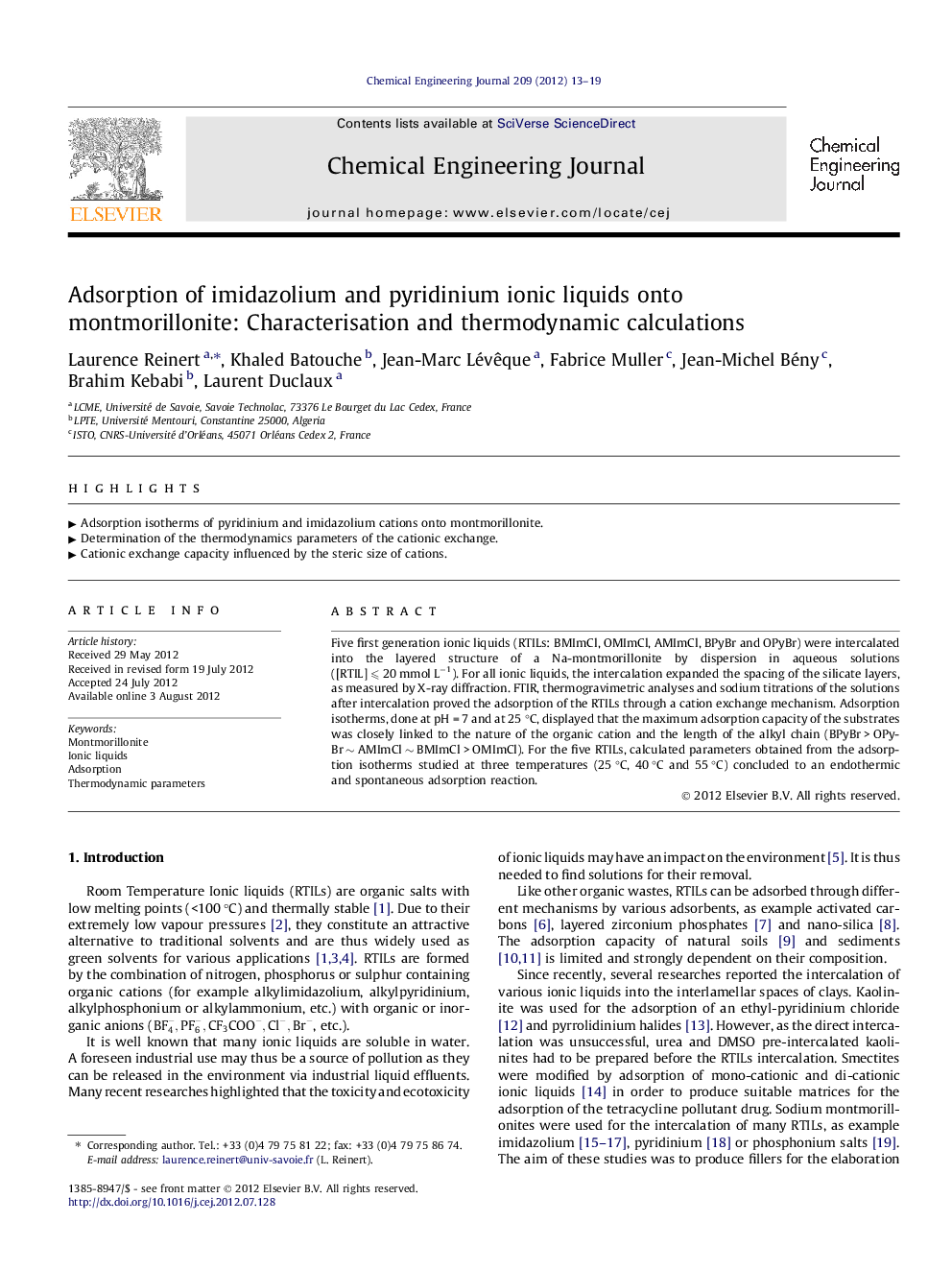| Article ID | Journal | Published Year | Pages | File Type |
|---|---|---|---|---|
| 149189 | Chemical Engineering Journal | 2012 | 7 Pages |
Five first generation ionic liquids (RTILs: BMImCl, OMImCl, AMImCl, BPyBr and OPyBr) were intercalated into the layered structure of a Na-montmorillonite by dispersion in aqueous solutions ([RTIL] ⩽ 20 mmol L−1). For all ionic liquids, the intercalation expanded the spacing of the silicate layers, as measured by X-ray diffraction. FTIR, thermogravimetric analyses and sodium titrations of the solutions after intercalation proved the adsorption of the RTILs through a cation exchange mechanism. Adsorption isotherms, done at pH = 7 and at 25 °C, displayed that the maximum adsorption capacity of the substrates was closely linked to the nature of the organic cation and the length of the alkyl chain (BPyBr > OPyBr ∼ AMImCl ∼ BMImCl > OMImCl). For the five RTILs, calculated parameters obtained from the adsorption isotherms studied at three temperatures (25 °C, 40 °C and 55 °C) concluded to an endothermic and spontaneous adsorption reaction.
► Adsorption isotherms of pyridinium and imidazolium cations onto montmorillonite. ► Determination of the thermodynamics parameters of the cationic exchange. ► Cationic exchange capacity influenced by the steric size of cations.
